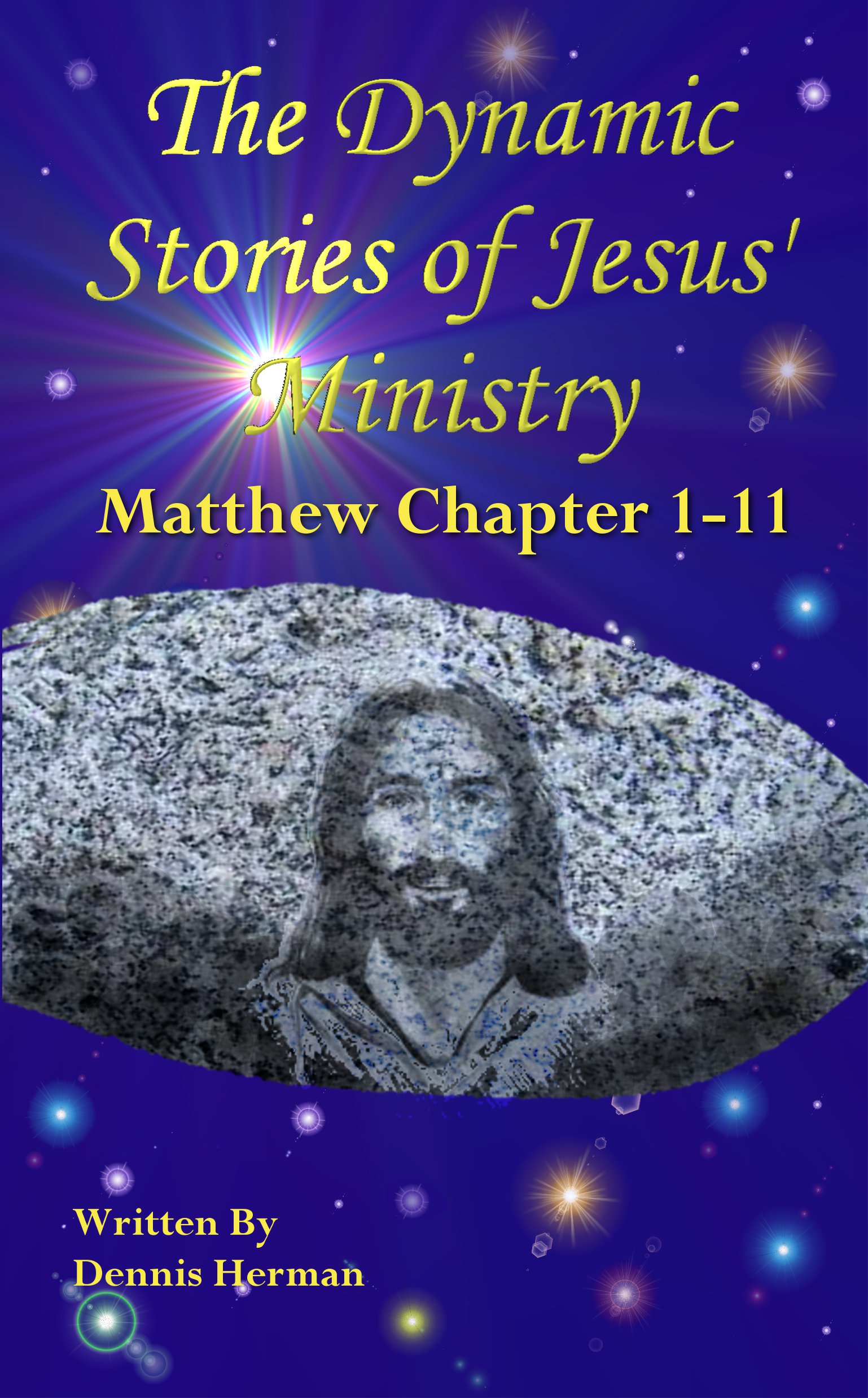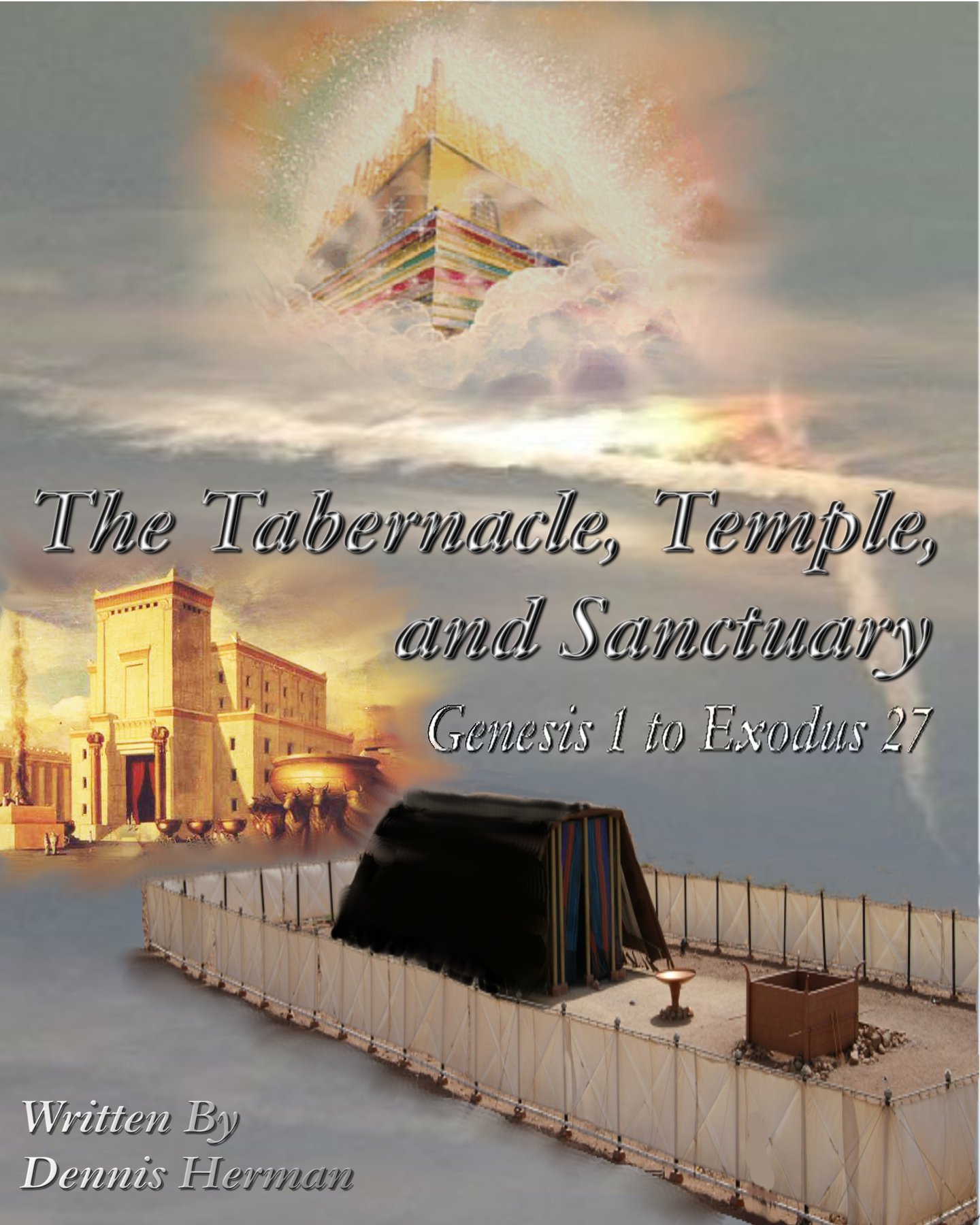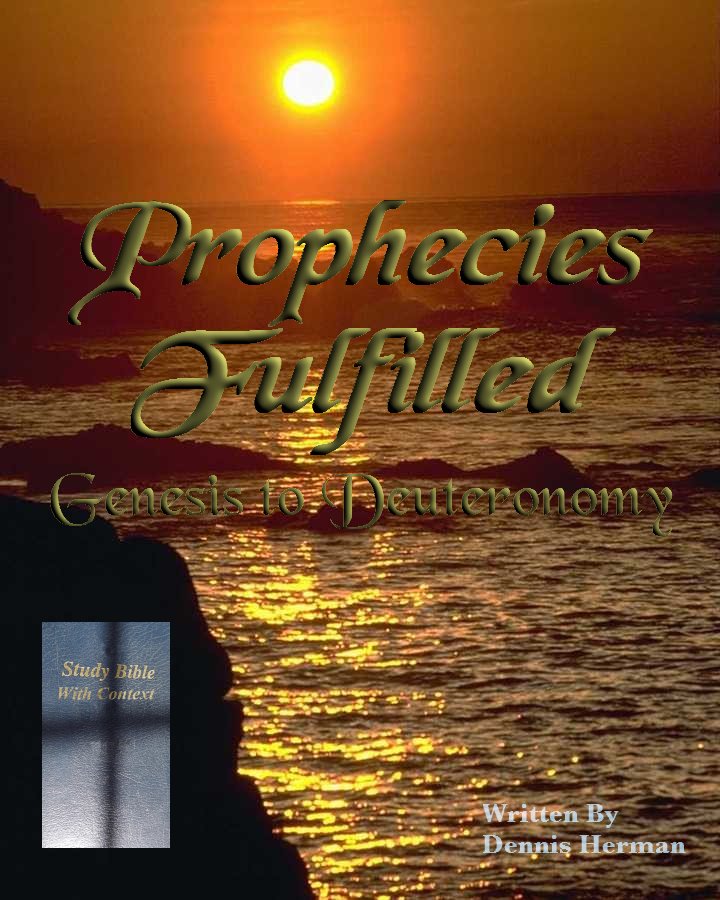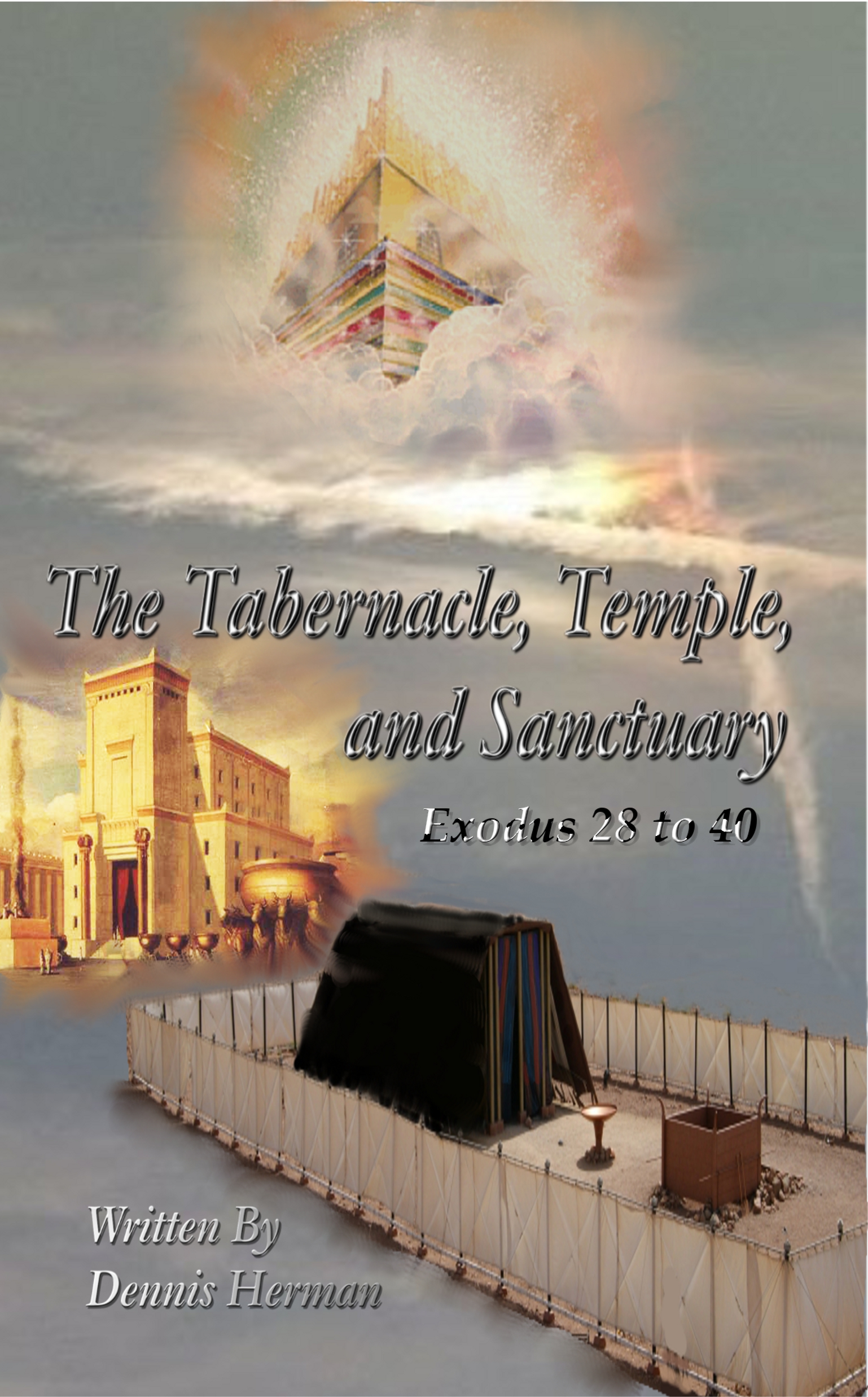Are we living in the 21st century DARK AGES? It seems history has repeated itself. Remember when the Bible was locked away from common people when only, “authorized versions,” of the Bible written in a language only authorized scholars were able to understand? They referred to this as the DARK AGES. Common sense will tell you, if Satan was not allowed to stop the Bible from being printed in languages people could understand, his next step was to take away the ability to understand. To a large degree Satan has accomplished his goal. This book unlocks the method of understanding scripture Jesus taught in simple terms everyone should be able to understand.
Something really bothered me as I finished studying and writing on Matthew’s Gospel. I couldn’t understand why the disciples failed to learn lessons Jesus tried teaching them over the years. The disciples were unprepared for Jesus’ sacrifice, even though He tried explaining the prophecies about Himself a number of times. What held the disciples back, and how does this relate to us today? I knew it had something to do with the lack of interest we see in churches today. I could feel the Gospels left a clue behind we were unable to see.
I wanted to write on Mark’s Gospel using the theme of, “looking through the eyes of a new believer.” I knew I had to view each verse and word as if I was looking at them the first time. I used variations of an inductive study method throughout the book and wanted to explain how this brought features of Mark’s Gospel to the surface. Many people comment how Mark rapidly shifts from one subject to another. Once viewed through the rules of an inductive study, it becomes clear why God’s Spirit worked with Mark’s unique style of writing. The simple process of looking back to compare previous texts showed exactly how Mark linked details of each lesson together to reveal much deeper spiritual lessons sitting just below the surface. I not only found myself reading Mark through the eyes of a new believer, I was seeing how Mark’s style of writing told a deeper story I never saw before.
Then I got to Mark chapter 4, the parable of the sower, as most people know it. One verse summed up why Jesus told this parable. Then Jesus said to them, “If you can’t understand the meaning of this parable, how will you understand all the other parables? (Mark 4:13 NLTse). This began a series of lessons. Over the next four chapters Jesus and His disciples were guided through a series of events which to my surprise taught the sequence of an inductive study. Everyone knows, you can’t learn Bible study with one lesson. It takes weeks or months to learn how to properly compare texts. That’s why Jesus spread His lessons out over months using the simple process of referring to texts, combined with personal experience and the most important step, looking back to review and compare. I wrote this book mixing short stories with scripture while explaining all the techniques Jesus used to teach His disciples how to understand parables and study scripture the way it was meant to be studied. I never imagined finding Bible study techniques recorded in the the Bible ready to be discovered. But am I the first to discover the sequence of lessons Jesus taught? I doubt it. These techniques have been used and taught for hundreds of years. The problem seems to come when institutions seized this information, created dozens of specialized terms few people could understand, reorganized the process, and finally termed it a higher degree of learning. The simple process Jesus came to teach was hidden away from common people. Satan reversed the trick he used with Eve in Eden. Satan convinced the world Bible study and understanding requires a higher level of knowledge. Some how Satan was able to convince the world to abandon God’s Word by leaving interpretations up to a chosen few. He accomplished his goal through fear. Satan invented a host of technical terms few people can understand. By doing this, Satan exposed himself as the liar he is. He promised Eve greater knowledge. Today his strategy is to take it away. Today only a few people are able to understand and explain lessons Jesus taught His disciples in simple terms common people can understand.
Understanding Parables According To The Gospel Of Mark Chapters 1 to 8
-
Written by Dennis Herman
Copyright © 2013 Dennis Herman
All rights reserved
ISBN 978-1-300-65619-7
Content ID: 13588992
Published by: Lulu.com
Understanding Parables According To The Gospel Of Mark by Dennis Herman is licensed under a Creative Commons Attribution-NonCommercial-NoDerivs 3.0 Unported License.
To review a copy of the License visit:
http://creativecommons.org/licenses/by-nc-nd/3.0/deed.en_US
Or send a letter to:
Creative Commons
171 Second Street, Suite 300
San Francisco, CA 94105
USA
Bibles:
NLTse New Living. Translation®. SECOND EDITION Tyndale House Publishers, Inc
KJV King James Version
MKJV Modern King James Version Sovereign Grace Publishers
Scripture quotations marked (NLT) (NLTse) are taken from the Holy Bible, New Living Translation, copyright © 1996, 2004, 2007 by Tyndale House Foundation. Used by permission of Tyndale House Publishers, Inc., Carol Stream, Illinois 60188. All rights reserved.
Table of Contents
Understanding Parables According to the Gospel of Mark
Introduction
Chapter 1
Mark 1:1-5 John the Baptist
Mark 1:6-8 John Announces Jesus
Mark 1:9-11 John Baptized Jesus
Mark 1:12-13 Jesus Goes to the Wilderness
Mark 1:14-15 Jesus begins His Ministry
Chapter 2
Mark 1:16-20 Jesus Calls Simon and Andrew, James and John
Mark 1:21-28 Possessed Man in a Synagogue
Mark 1:29-31 Jesus Heals Simon’s Mother in Law
Mark 1:32-39 Jesus Healed Many
Mark 1:40-45 Jesus Heals a Leper
Chapter 3
Mark 2:1-12 Jesus Heals a Paralyzed Man
Mark 2:13-17 Jesus Calls Levi
Mark 2:18-22 Fasting, Old and New
Mark 2:23-28 Lord of the Sabbath
Chapter 4
Mark 3:1-6 Jesus Heals A Withered Hand
Mark 3:7-12 Jesus Teaches At The Lake
Mark 3:13-19 Jesus Ordained Twelve
Mark 3:20-30 Blaspheme Against the Holy Spirit
Mark 3:31-35 Who is My Mother and my Brother
Chapter 5
Mark 4:1-20 Parable of the Sower
Mark 4:21-25 Light Will Shine
Mark 4:26-29 The Seed Sprouts and Grows
Mark 4:30-34 Mustard Seed
Mark 4:35-41 Jesus Rebuked the Wind
Chapter 6
Mark 5:1-20 Jesus Faces a Legion of Demons
Mark 5:21-43 Jesus Heals an Issue of Blood and Raises a Girl From Death
Chapter 7
Mark 6:1-6 Jesus Rejected in His Own Town
Mark 6:7-13 Jesus Sends Out the Twelve
Mark 6:14-29 Death of John the Baptist
Mark 6:30-44 Jesus Feeds 5000
Mark 6:45-56 Jesus Walks on Water
Chapter 8
Mark 7:1-13 Unwashed Hands
Mark 7:14-23 Not What Enters The Mouth
Mark 7:24-30 Bread to Dogs
Mark 7:31-37 Jesus Heals A Deaf Man
Chapter 9
Mark 8:1-9 Jesus Feeds 4000
Mark 8:10-21 Jesus Asks Why The Disciples Cannot Understand
Mark 8:22-26 Jesus Heals a Blind Man
Mark 8:27-38 Who Do You Say I Am
Mark 1:12 13 Jesus Goes to the Wilderness
Mark 1:12-13 The Spirit then compelled Jesus to go into the wilderness, (13) where he was tempted by Satan for forty days. He was out among the wild animals, and angels took care of him.
Wait! Where are the details of Jesus’ temptation in the wilderness? As a new believer, I can’t believe Mark left out all those details. Why would Mark begin his book with Jesus’ baptism, then skip all the details of what His baptism led to?
But wait. Did Mark leave out all the details, or did he actually provide a few others missed? Let’s take a close look at each word. There is one that sticks out.
Mark 1:12 The Spirit then compelled Jesus to go into the wilderness,
The word wilderness is used in a previous verse.
Mark 1:4 This messenger was John the Baptist. He was in the wilderness and preached that people should be baptized to show that they had turned to God to receive forgiveness for their sins.
What does that mean? Jesus was baptized in the wilderness and the Spirit led Him into what, another wilderness? Maybe the answer is what John lived off of in the wilderness?
Mark 1:6 His clothes were woven from coarse camel hair, and he wore a leather belt around his waist. For food he ate locusts and wild honey.
John ate locusts and wild honey in the wilderness. Didn’t Jesus go into the wilderness to fast? Didn’t the devil tempt Jesus with stones, asking Him to turn them into bread? If John found locusts and wild honey in the wilderness to eat, couldn’t Jesus find the same food, if He wanted to?
Then Jesus was led by the Spirit into the wilderness to be tempted there by the devil. For forty days and forty nights he fasted and became very hungry. (Matthew 4:1-2)
To be fair Matthew provides the same details about John’s diet. Mark’s quick way of moving from one scene to another makes it easier to see important details. The same food made available for John in the wilderness should have been there for Jesus. This shows Jesus fasted to show His love, dedication and faith in His Father. Do you think Jesus laughed on the inside when the devil tempted Him? “If you are the Son of God, tell these stones to become loaves of bread.” Jesus would have known other food was available. The devil knew Jesus fasted to draw nearer to His Father and His Spirit. To Jesus, food was never a question. It would have been ridiculous for the devil to tempt Jesus with stones. God could have sent a swarm of locusts, or brought honey from the ground or a rock at any time. The devil’s first temptation was foolish to say the least. But, isn’t that the way the devil always begins his work of deception? When I look at the scene and characters involved, Jesus must have been the first person the devil tempted who was actually smarter and better prepared. Satan must have planned his attack a long time and personally implemented every detail. No matter, it did not work.
One of the most valuable pieces of information we have is knowing Jesus already defeated the devil.
Mark 4:1-20 Parable of the Sower
Mark 4:1-9 NLTse Once again Jesus began teaching by the lakeshore. A very large crowd soon gathered around him, so he got into a boat. Then he sat in theboat while all the people remained on the shore. (2) He taught them by telling many stories in the form of parables, such as this one: (3) “Listen! A farmer went out to plant some seed. (4) As he scattered it across his field, some of the seed fell on a footpath, and the birds came and ate it. (5) Other seed fell on shallow soilwith underlying rock. The seed sprouted quickly because the soil was shallow. (6) But the plant soon wilted under the hot sun, and since it didn’t have deep roots, it died. (7) Other seed fell among thorns that grew up and choked out the tender plants so they produced no grain. (8) Still other seeds fell on fertile soil,and they sprouted, grew, and produced a crop that was thirty, sixty, and even a hundred times as much as had been planted!” (9) Then he said, “Anyone with ears to hear should listen and understand.”
The disciples began to see a pattern forming. Every time Jesus was near water, or an open field a crowd would gather. As a matter of fact this happened in homes also. It seemed no matter where Jesus was, it did not take long for word to get around.
As the crowd grew Jesus stepped into a boat. James and John cast it out a little further into the water, each holding an anchor rope. As crowds gather around they welcomed the cool breeze coming off the water. It created tiny waves that rocked the boat at first. James and John walked out a little further, one at the front, the other at the back of the boat. When they pulled on the ropes it steadied the boat, making it easier for Jesus to walk up and down to add animation to His lesson without rocking.
“Listen! A farmer went out to plant some seed. As he scattered it across his field, some of the seed fell on a footpath, and the birds came and ate it.” James wondered why Jesus would tell a story about a farmer while he was in a boat. Wouldn’t it be better if He told a story about fishing? Peter thought about helping his mother in the garden as a boy. He remembered how he helped his mother work the ground, carefully planting the seeds in even rows, marking them with sticks. A smile came to Peter’s face as he thought about how his mother explained how water made the plants grow. As a young boy he would run out every morning to see if anything was growing, It seemed to take forever. Then one day he saw the first signs of life. Tiny green plants began poking up through the soil. Peter wanted to help them grow, so he ran back and forth from the lake with buckets of water. He thought if a little helped, more would be better. He was so proud of flooding the small garden he ran inside the house to call his mother. She came out, looked at the garden swimming in water. Kneeling down she gave Peter a hug. She then explained how the plants need air and sunlight as much as water. Peter felt so bad when many of the plants withered and died, but learned an important lesson about not only plants, but life.
We all seem to lead an unbalanced life in one way or another. It may be an imbalance of love and discipline, diet, time between work, pleasure and family, or our spiritual life. Too much water may kill off new believers, like too much doctrine, which blocks out Jesus and the love He gives us to share. Whatever the imbalance may be, Jesus can meet us where we are, offer suggestions, and if we are willing, reestablish the balance God created within us.
One of the farmers listening to Jesus thought how ridiculous His story was. Why would anyone be so careless as to scatter precious seed on the road? He thought about how carefully he plows his rows and watches over the hired help and family to ensure they drop the proper amount of seeds with the proper spacing along each row. There is nothing careless about farming, not if you want to make money. Nothing should be left to chance.
How many of us have seen the same frame of mind in churches? Jesus gives us a parable telling us to freely cast His seed, God’s Word. Jesus tells us He knows some seed will never sprout because it appears to land on hopeless hearts. Although we receive instructions which make little worldly sense, some church leaders want follow their own plans, hoarding all the seed, storing it in barns until the judgment day. How do they hold back God’s Word? By not exploring the messages and lessons given to them as a gift from the Spirit. Some church leaders feel only qualified members should be allowed to study, interpret and share God’s Word, His seed. In effect they are telling other members to hold onto their seed, don’t spread it out. Why? Are they afraid of attracting members who may not fit their concept of the perfect church? Or are they afraid a member may spread a seed that is not in line with their perfect doctrine? In either case, they are not following the instructions of the teacher crazy enough to tell a parable about a farmer from a boat.
Watching Jesus reminded the farmer of his reliance on God. If God didn’t bring the sun and rain, there wouldn’t be any new seed at all. So what is the farmer in Jesus’ story wasting? The seed he has been freely giving as a gift from God.
Other people watched sea gulls running up and down the shore, darting through the sky, occasionally diving into the water. They knew gulls eat anything and everything. If they could they would steal a meal out of your mouth. They were known as winged beggars, scavengers.
Jesus continued. “Other seed fell on shallow soil with underlying rock. The seed sprouted quickly because the soil was shallow. But the plant soon wilted under the hot sun, and since it didn’t have deep roots, it died.
James related the shallow soil to shallow waters. They could fish shallow water where they may catch more, but smaller fish. Deep water required more planning, patients, and wisdom. Shallow waters were also safer and took less time to reach. James laughed to himself. Shallow water was really for children.
The same is true when we spread God’s Word. When we are weak in our faith spending little time in His Word and less time with His Spirit, we fish shallow waters, intentionally casting our seed on shallow soil. Do we ever consider turning up the ground in our own hearts? Do we search deep for God’s message, challenging God when we study His Word? Or do we take the easy way out, expecting others to pray, study, talk to God for us, and wait for a brief summary? How much of God’s Word are we able to share when all we receive is a short summary? Are we able to share from a deep, close, personal relationship with God, or do we feel sharing a few seeds in shallow soil is our direction and calling from God?
After bending over the side of the boat, dipping His arm in as far as it would reach and scooping out handful after handful of water to illustrate deep soil, Jesus stood up, smiled and shared His favorite part of the parable. “Still other seeds fell on fertile soil, and they sprouted, grew, and produced a crop that was thirty, sixty, and even a hundred times as much as had been planted!”
Jesus knows we are all different. We aren’t all going to spread the same amount of seeds, but we are all going to be given some seeds to spread. If we choose to hang into them and carry them around, do we notice the load? Jesus also taught about a load. “Come to me, all of you who are weary and carry heavy burdens, and I will give you rest. Take my yoke upon you. Let me teach you, because I am humble and gentle at heart, and you will find rest for your souls. For my yoke is easy to bear, and the burden I give you is light.” (Matthew 11:28-30 NLTse). Does this light load have anything to do with spreading the seeds, delivering the messages Jesus gives us to share? Do we make our own load heavy by hoarding the seeds we are given to spread?
Jesus finished His story adding a word of advise to those paying attention. “Anyone with ears to hear should listen and understand.” This made everyone, especially His disciples think back on what he said. They began looking around. What do the birds represent, the road, the ground and seed? It suddenly dawned on them, Jesus told the story because it had a much deeper spiritual meaning.
Mark 4:10-20 NLTse Later, when Jesus was alone with the twelve disciples and with the others who were gathered around, they asked him what the parablesmeant. (11) He replied, “You are permitted to understand the secret of the Kingdom of God. But I use parables for everything I say to outsiders, (12) so that the Scriptures might be fulfilled: ‘When they see what I do, they will learn nothing. When they hear what I say, they will not understand. Otherwise, they will turn to me and be forgiven.'” (13) Then Jesus said to them, “If you can’t understand the meaning of this parable, how will you understand all the other parables? (14) The farmer plants seed by taking God’s word to others. (15) The seed that fell on the footpath represents those who hear the message, only to have Satan come at once and take it away. (16) The seed on the rocky soil represents those who hear the message and immediately receive it with joy. (17) But since they don’t have deep roots, they don’t last long. They fall away as soon as they have problems or are persecuted for believing God’s word. (18) The seed that fell among the thorns represents others who hear God’s word, (19) but all too quickly the message is crowded out by the worries of this life, the lure of wealth, and the desire for other things, so no fruit is produced. (20) And the seed that fell on good soil represents those who hear and accept God’s word and produce a harvest of thirty, sixty, or even a hundred times as much as had been planted!”
The disciples recounted details of the day sitting around a fire after dinner. It didn’t take long for them to begin questioning one another on Jesus’ parable about the sower with seed. Each of the disciples tried to outwit the others, fashioning their questions so they would not let on to the fact they did not know the answers. It soon became evident, no one knew the answers. So they asked Jesus what the parable meant. By the smile on Jesus’ face they could tell He was waiting for them to ask. He replied, “You are permitted to understand the secret of the Kingdom of God. But I use parables for everything I say to outsiders, so that the Scripturesmight be fulfilled: ‘When they see what I do, they will learn nothing. When they hear what I say, they will not understand. Otherwise, they will turn to me and be forgiven.'” They knew it was important when Jesus quoted scripture. Now they were listening. Jesus waited until He knew every eye was on Him, every heart was open. Then Jesus said to them, “If you can’t understand the meaning of this parable, how will you understand all the other parables?”
This is an import message to us. How do we understand the meaning of this parable? In one chapter Mark records the parable and provides the answer. When we look at the four gospels we find only a handful of parables Jesus explained. Why did Jesus explain only a few parables and not others? Is there a deeper message we see when we understand the reason?
The disciples wanted to understand all of Jesus’ parables. According to Jesus, He was about to reveal the key to understand all of them. They were excited as Jesus began to explain each detail. “The farmer plants seed by taking God’s word to others.” Each of the disciples knew they were being trained to take God’s Word to others. They hoped to one day become a teacher like Jesus, to have crowds follow them, to look at scripture and understand. They understood the meaning of the symbol, but still did not understand the lesson. Jesus continued, “The seed that fell on the footpath represents those who hear the message, only to have Satan come at once and take it away.”
They knew Ezekiel and Daniel used birds to represent people, but never heard of birds representing Satan. Maybe it was the control he had over them. After all, not many people are possessed by demons, but a lot of people break God’s law, make life more difficult for others, inflict unnecessary pain and trials, all acting the part of Satan’s agents. Now the disciples were beginning to think they are finally able to understand. People are used by Satan to snatch the seeds away.
Jesus gave them a minute to think about and absorb what they learned so far. He wanted His words to sink in deep. He also know they needed a few moments with the Spirit, so He could explain the details when their heart was open to understanding. When He knew they were ready He added more. “The seed on therocky soil represents those who hear the message and immediately receive it with joy. But since they don’t have deep roots, they don’t last long. They fall away as soon as they have problems or are persecuted for believing God’s word.”
They all knew plants would not grow in stony soil. Now they understood why Jesus used it as a symbol. They once again began to think about scriptures describing stones. And I will give you a new heart, and I will put a new spirit in you. I will take out your stony, stubborn heart and give you a tender, responsive heart. (Ezekiel 36:26 NLTse). They also saw the pattern developing. The hidden meaning of the symbols Jesus used can be found in the scriptures. It seemed simple enough. No wonder Jesus began His explanation by quoting scripture. It was a hint. More than a hint, a guide!
Once they understood the symbol stony ground was explained by scripture, they could see Jesus was referring to a stony heart. Throughout the parable Jesus was referring to the effect God’s Word has on the heart. This explained why some people understood, while others didn’t. They realized there were two ingredients to understand Jesus’ parables, an open heart, and the scriptures.
Stony ground describes the condition of this world. “They fall away as soon as they have problems or are persecuted for believing God’s word.” Satan does his best to distract everyone trying to accept and understand God’s Word. It is something we need to learn to overcome in our own lives. It is part of the personal relationship we have with God. We decide if we are going to make the time or not. Then there are the distractions in the form of trials testing our faith. Some times when people see a new faith, a new enthusiasm in you, they want you to tone it down, or begin to avoid you. Persecution happens in the church. Many people are afraid to share what they have learned. They may have seen others ridiculed when they come to church ready to share something new they saw while studying at home. Some times leaders discourage personal study and growth in the Spirit. They may be afraid of questions they are unable to answer. They may be afraid of members with a higher understanding then what they have been able to achieve. Then there is the fear of someone questioning their doctrines.
Jesus could tell by the smiles on their faces the Spirit was working on their hearts and they were beginning to understand. Jesus knew it was time to share the meaning of good soil. “And the seed that fell on good soil represents those who hear and accept God’s word and produce a harvest of thirty, sixty, or even a hundred times as much as had been planted!”
When the disciples heard this they wondered exactly what Jesus meant by accept God’s Word. This would mean the other soils, those on the road and with stony hearts did not accept God’s Word. Did Jesus mean they did not accept the parables He taught, scripture which explained the symbols, or everything? Can people accept one part but not the other? What did they have to do to accept God’s Word? Was Jesus willing to teach them everything they needed to know? They knew their goal was to bring more people to Jesus, to help teach God’s Word. Now they knew they had to keep their hearts and minds open, concentrate on Jesus’ parables, and compare them with scripture to be able to learn and share the spiritual meaning of the symbols He used.
Mark 8:10-21 Jesus Asks Why The Disciples Cannot Understand
Mark 8:10-21 NLTse Immediately after this, he got into a boat with his disciples and crossed over to the region of Dalmanutha. (11) When the Pharisees heard that Jesus had arrived, they came and started to argue with him. Testing him, they demanded that he show them a miraculous sign from heaven to prove his authority. (12) When he heard this, he sighed deeply in his spirit and said, “Why do these people keep demanding a miraculous sign? I tell you the truth, I will not give this generation any such sign.” (13) So he got back into the boat and left them, and he crossed to the other side of the lake. (14) But the disciples had forgotten to bring any food. They had only one loaf of bread with them in the boat. (15) As they were crossing the lake, Jesus warned them, “Watch out! Beware of the yeast of the Pharisees and of Herod.” (16) At this they began to argue with each other because they hadn’t brought any bread. (17) Jesus knew what they were saying, so he said, “Why are you arguing about having no bread? Don’t you know or understand even yet? Are your hearts too hard to take it in? (18) ‘You have eyes–can’t you see? You have ears–can’t you hear?’ Don’t you remember anything at all? (19) When I fed the 5,000 with five loaves of bread, how manybaskets of leftovers did you pick up afterward?” “Twelve,” they said. (20) “And when I fed the 4,000 with seven loaves, how many large baskets of leftoversdid you pick up?” “Seven,” they said. (21) “Don’t you understand yet?” he asked them.
As a new believer I see a number of alarming questions Jesus is asking His disciples. Don’t you know? Can’t you see? Can’t you hear? Don’t you remember anything at all? Don’t you understand yet? The sequence itself speak volumes. What prompted Jesus to ask these questions? The answer is in the middle of the questions. It seems the disciples forgot about Jesus feeding 5000 and 4000. If they forgot the miracles, they most likely missed the spiritual lessons Jesus was teaching.
Was Jesus upset merely because His disciples were not paying attention to His lessons, or was there another reason? We find the answer by simply looking back a few texts. The Pharisees asked Jesus for a sign. They were testing Him. After following Jesus around for weeks, watching Him cure every form of sickness from every individual, the Pharisees doubted. Maybe they didn’t doubt Jesus. Maybe the refused to trust Him because He healed everyone who came to Him. In Tyre we see He healed a Gentile woman, born in Syrian Phoenicia. As we look back a little further we see Jesus cast hundreds of demons from a man sending them into a herd of pigs. Most likely this was another group of people the Pharisees detested. When we look back a little further we see Jesus healed a woman with an issue of blood. Someone the Pharisees would have labeled unclean and crossed the street to avoid. Before that, Jesus healed a leper and sent him to the temple with an offering to show himself to the priests. That was the first they heard of Jesus and something about it turned them against Him before they even met Him. Since that day they have been following Him, looking for faults, trying to prove Jesus was not a prophet, and one more thing – after Jesus healed a man’s withered hand in the Sabbath – At once the Pharisees went away and met with the supporters of Herod to plot how to kill Jesus. (Mark 3:6 NLTse). Its no wonder Jesus told His disciples to be careful of the yeast of the Pharisees and Herod, they were plotting to kill Him Their hatred grew and expanded like bread in an oven.
What about the disciples? Now that we see one of the lessons Jesus was teaching, how did each apply to the disciples? Were the disciples looking at the Pharisees as a teacher equal to or in addition to Jesus? How would it effect the mission they would soon receive? Were they going to establish divisions before they began preaching? Jesus never taught divisions. Throughout His ministry, He continued to reach out to the Pharisees and religious leaders. Some responded while others were determined to oppose Jesus and all His views, no matter what.
Looking over these texts, as a new believer I can see how certain words are repeated and how each point to different elements Jesus emphasized so their minds would linger on the spiritual lessons. The word boat points us back to the crossings the disciples made from one side of the lake to the other and how each landing resulting in a new spiritual lesson. There were also lessons taught while in the boat. The word boat points us all the way back to the very beginning of the sequence of lessons when Jesus told the parable of a sower and his seed. This is when Jesus promised to teach His disciples how to understand all parables. Since that time Jesus shared one study rule after another. Was one of those lessons centered in the fact one side of the lake was Jewish, the other side Gentile?
We see the phrase miraculous sign repeated. It appears to be associated only with the Pharisees questioning Jesus. But when we look at Jesus’ reaction to the slow learning process of the disciples, we see Jesus mentioning two, feeding 5000 and 4000. Here we see how Jesus viewed the narrow minds and thinking of His disciples. In essence Jesus is comparing the disciples’ slow learning process to the Pharisees’ doubts. Personal beliefs and knowledge may be weighed one way in this world, but Heaven has a different view.
We see the disciples crossing the lake in a boat at the beginning of these texts and again in the middle. Each time they cross it seems to begin a new lesson. In fact each of these lessons are related. Each provides on element which needs to be added to the others to be fully understood. For instance in this case we see the Pharisees asking for a miraculous sign, followed by the disciples forgetting a few. As we look back between Mark chapter 4 and 8 we see the sequence of crossing in the boat marking the beginning of a related lesson.
The texts also show a relationship between Jesus and loaves of bread. Jesus is calling attention to bread. The fact the disciples forgot to bring enough has a direct relationship to the fact they forgot about Jesus miracles when He fed 5000 and 4000 plus people from a few loaves of bread. After feeding 5000, John recorded what Jesus told them, “I am the bread of life. Whoever comes to me will never be hungry again. Whoever believes in me will never be thirsty.” (John 6:35 NLTse). Jesus also told them, “The Spirit alone gives eternal life. Human effort accomplishes nothing. And the very words I have spoken to you are spirit and life.” (John 6:63 NLTse). Didn’t they understand the connection at the time? They were supposed to be learning how to understand parables which contain symbols. Here we see Jesus explaining symbols, and it is as if the disciples cannot understand Jesus and His Words are the Bread of life from Heaven. This is one of the fundamental symbols in scripture. Some of the disciples were about to add a significant finish to God’s book to this world. Jesus could not afford to have them misunderstand a single lesson. If nothing else this shows the patients Jesus exhibited while teach.
There is another word repeated, leftovers. What does the leftover bread represent? Was it something for the disciples to take with them? Why did they forget again? Does it still represent Jesus’ word, and how the disciples failed to remember the lessons? Is this why Jesus seemed upset with them? Its not only bread and miracles they forgot, it was His words.
Do we forget lessons in life? The Holy Spirit spends days, weeks, years arranging sequences in our lives to show us specific lessons we need to learn. We all have our own ways of getting into a boat with Jesus, that is when we are close to Him, crossing a lake, then what happens when we get to the other side? Do we look, listen and learn? Are we paying attention? Do we remember details of the miracles in our lives so we can put the pieces of the puzzle together? Or do was accept the miracles, take in what we need to be full for the moment, then leave the rest sitting on the ground? Are we being lazy and careless with our spiritual life, leaving the best features behind. Do we listen when we should, and talk only when we need to? Do we pay attention to the jobs the Spirit gives us to help complete the harvest? Are we like the son refusing to work then reluctantly going into the field? Or the other who claims to have enthusiasm to work, but only provides lip service with no heart in the matter?
The Spirit has been working in everyone’s life to bring about a change. Sometimes for years or a lifetime. Everyone has questions about God on their mind and in their hearts. Most people are looking for answers but don’t know where to turn. This is where you come in, the one following Jesus, paying attention to His words, remembering the miracles in your life, the one in a million with a real relationship with Christ your Savior. The Spirit gives you a message, often times a question to ask a person with an open heart ready to accept a seed, His Word. You are the farmer. It is a great responsibility you if you choose to accept it. Are you up for the task? Have you prepared with all your heart, soul and mind? Are you listening to the Spirit for that message?
Are you one of the crowd, people who position themselves in the back, never getting close enough to Jesus to see the miracles, or understand? Do you prefer to remain seated, waiting for someone to serve you? Do you take in enough to feel full, then carelessly leave the rest of Jesus’ Word on the ground? Do you think you see on opportunity to help in the harvest, deciding to deliver a message of your own making, based on your own limited wisdom? Or worse yet, do you feel delivering canned, prepackaged, one size fits all messages is serving the Lord? Are you doubting Jesus’ ability like the Pharisees, or forgetting like the disciples? By his death, Jesus opened a new and life-giving way through the curtain into the Most Holy Place. And since we have a great High Priest who rules over God’s house, let us go right into the presence of God with sincere hearts fully trusting him. For our guilty consciences have been sprinkled with Christ’s blood to make us clean, and our bodies have been washed with pure water. (Hebrews 10:20-22 NLTse).






















